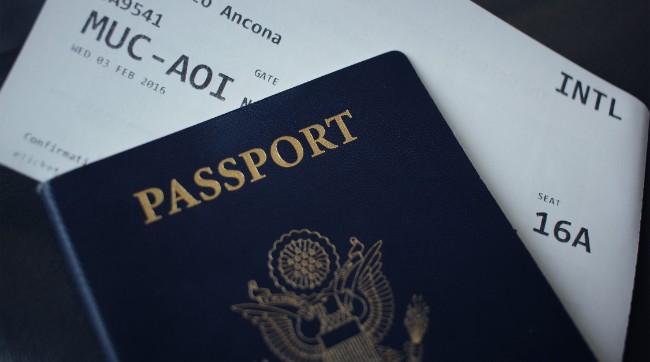
Back in March of 2017, we told you about a motion that passed through the European Parliament rescinding the right of American citizens to travel to the Euro-Zone visa-free. Well, that day has come. Last week, the European Union announced that as of 2021 all American citizens (and all other citizens from countries with visa-free travel to the EU) wishing to travel to any Schengen Country (countries associated with the European-Economic Zone with borderless travel) will need to apply for an ETIAS pre-screening.
The European Travel Information and Authorization System is being implemented to combat a couple of things. Mainly, this is a tit-for-tat slap to America for refusing to remove visa pre-screening requirements for EU citizens from Poland, Croatia, Bulgaria, Cyprus, and Romania. Secondly, we already require all European Union citizens (even from the UK) to do exactly the same thing via our own ESTA program, which started over ten years ago. Lastly, this really is an extra layer of security that’s hard to argue with in this day and age.
Essentially, the pre-authorization process allows a nation (or immigration bureau) the chance to make sure the person crossing their border is who they say they are and that said person is not on a terrorist watchlist. From the European Commission: “This will help to identify any possible security concerns prior to their travel to the Schengen area, thus contributing to more efficient management of the EU’s external borders and improved internal security”

Let’s break this down. When you apply for your ETIAS approval, you will be asked (link is to a non-gov website with solid info) about your previous criminal record. Whether the ETIAS system has the ability to check if, say, you had a DUI five years ago is a little murky. They’ll also ask if you’ve spent time in conflict zones. This is, easily justifiable if you’re a journalist with a press pass, a doctor on a medical mission, or an NGO worker. Lastly, they’ll ask if you’ve ever been asked to leave a country and give paper documentation that you’re allowed to return. Hey, remember that time you got arrested in Cancun and deported? Yeah, that might come back to bite you in the ass.
So how — exactly — is ETIAS going to cross-check any of this? According the European Union, they’ll be using the following databases: SIS (Schengen Information System), VIS (Visa Information System), EUROPOL DATA, SLTD & TDAWN (Interpol), EURODAC (fingerprint database), ETIAS database, “etc…” What exactly those “etc…” databases are is anyone’s guess. And before you ask — yes, your American criminal record is accessible via Interpol.

So, that’s the background of what ETIAS will be looking at. This is how it’ll work in real life.
If you’re planning to visit a Schengen country (again, this is a non-governmental website with vetted info) in the Euro-Zone anytime after December 31st, 2020, you’ll need to go to the ETIAS application page (which is not live yet). Once there, you’ll fill out a questionnaire that’ll take a few minutes. Basically, you enter your passport information (this includes biometrics like eye scans, facial recognition, and fingerprints) and background info along with an email address and pay a €7 ($7.50) fee with a credit or debit card. After ten minutes, you’ll receive either an approval letter or a refusal letter (with reasons why you were refused). The EU says that they expect 95 percent of applications to be approved within those first ten minutes.
Next, you print out or save a PDF to your phone of the ETIAS travel document. The authorization will be valid for three years of travel. After it expires, you’ll have to apply for another. You’ll need to show your ETIAS authorization along with your passport and fingerprint at the border when entering a Schengen country in the Euro-Zone. Is it a visa? Not exactly, it’s a pre-screening in lieu of a visa — though it sounds enough like a visa to confuse most major outlets, leading the Washington Post and others to make corrections over the weekend (the number of info-based sites that aren’t government run increases the confusion).
Again, this is a quid-pro-quo for what we already require of EU-citizens to do. The only difference is that our ESTA is $14 and last only two years. Is it a hassle? Sure, minimally. But it’s also just the reality of the world we live in now. And seven bucks to travel to 26 countries in Europe over three years is the smallest price to pay.






